What is DAA, and how does this system help drones?
Dangerous cases of approaching UAVs with PVA or other drones can occur at high speeds, outside the line of sight and rely on visual control devices either extremely unreliable or simply impossible, it was to resolve such dangerous situations that the DAA system was created. System.
Each subsystem solves individual tasks:
About a year ago in the United States, NASA flew and tested the Ikhana UAV system. June 12, 2018 for the first time a UAV flew in the national airspace of the United States without being accompanied by a special aircraft. Typically, these flights always require that the UAV should be followed by a safety aircraft. But in this case, the escort plane was not used, and the drone used its own DAA (Detect-and-Avoid System) collision avoidance and avoidance system. The special permission of the FAA allowed the remote pilots of the Ikhana UAV to fully rely on the work of a special on-board complex.
')
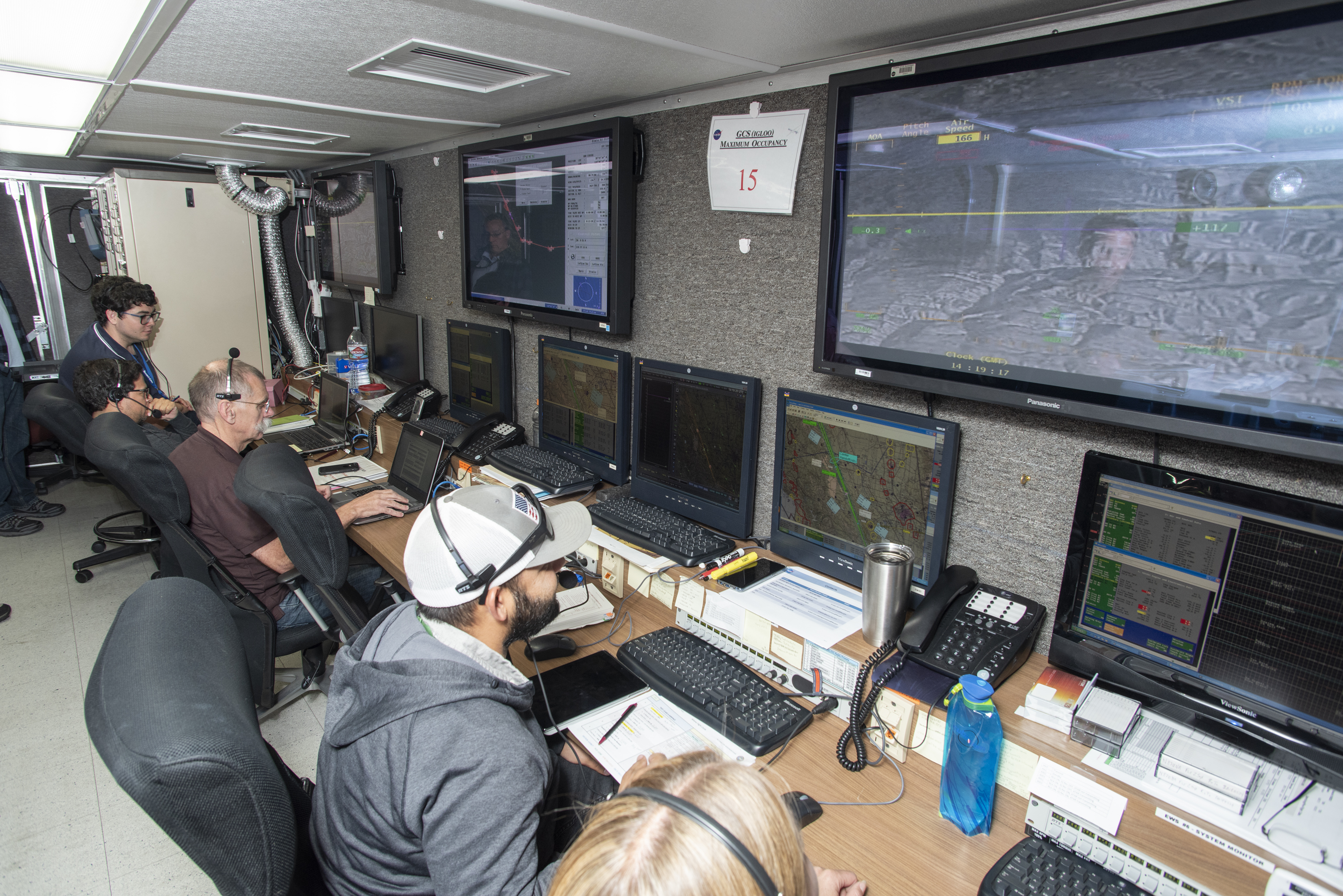
Credits: NASA / Ken Ulbrich
During the test flight, the manned aircraft made a dangerous approach to the Ikhana UAV, and the DAA system successfully informed the pilots and allowed them to perform a safe evasion maneuver.
Currently, the weight of the DAA kit is about 50−70 kg. And, as it is easy to guess, such a system is the prerogative of large UAVs, like Ikhana or SkyGuardian. However, it is worth noting that NASA also carried out work with a system adapted for mid-sized UAVs. These were tests on the SIERRA-B drone.
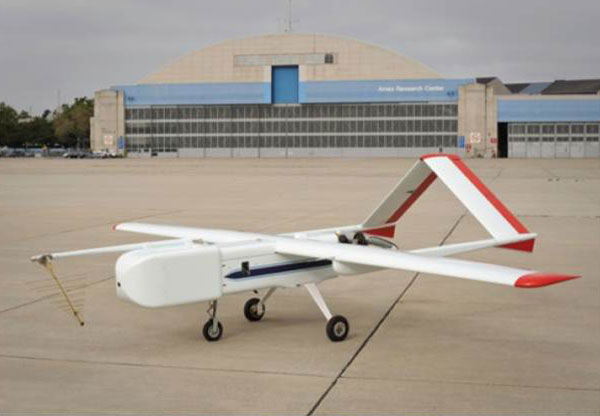
NASA SIERRA-B (Sensor Integrated Environmental Remote Research Aircraft)
The main problem of the test team with the SIERRA-B was the smaller size of the UAV, the SIERRA-B has a wingspan of 20 feet and weighs about 500 pounds against 66 feet and 8,000 pounds for Ikhana. However, flight tests on the SIERRA-B were successful and allowed to evaluate how DAA standards developed for larger and faster UAVs would need to be adapted for mid-size and slower drones to allow them access to commercial flights in the national airspace.
For smaller drones, options without using the onboard locator are considered, in this case automatic dependent surveillance-broadcasting is used as a key technology, which is also included in the complex. Today, special mobile transponders for drones are offered by several large companies. As part of the DAA NASA test, Sagetech Corporation provided its mobile transponder for the drone SIERRA-B. There are others, including Russian ones.
Let's take a closer look at the component parts of DAA.
1. An airborne radar developed by GA-ASI.
It consists of a two-panel active electron scanning electron antenna, which enables the pilot to detect and track aircraft in the same field of view as the person. Airborne radar allows you to track multiple targets simultaneously, as well as continue the background search for new ones. It is a key component of onboard DAA equipment.

Due regard radar assembly
www.ga-asi.com

www.ga-asi.com
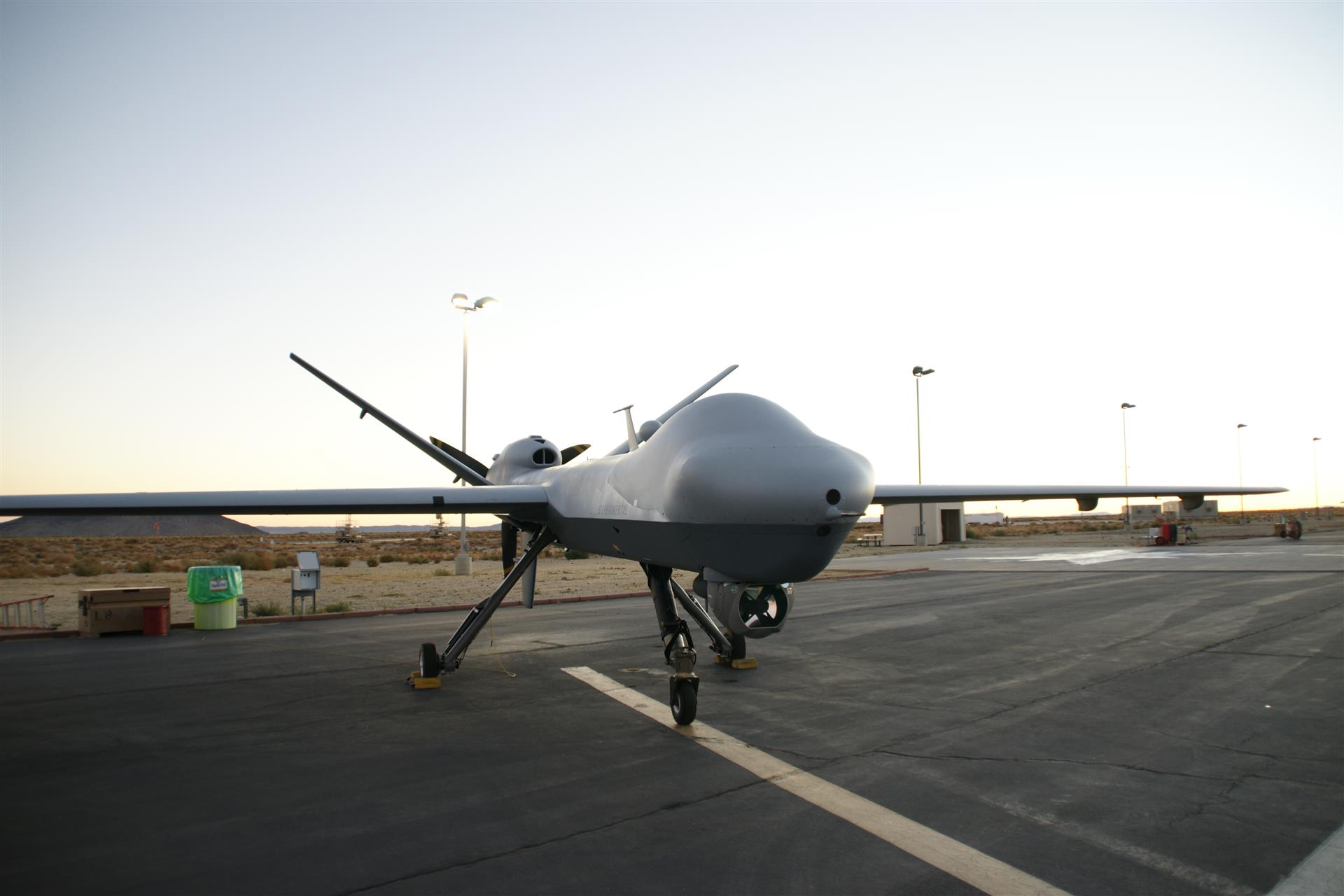
www.ga-asi.com
A DAA must detect and avoid collisions with aircraft that are both equipped with responders and not. Detection and tracking of aircraft with responders is carried out using the AZN-B, collision avoidance system (TCAS).
2. TCAS collision avoidance system.
The system is compatible with civil aviation technology and allows drones to interact with PVA equipped with a similar collision avoidance system. The second generation TCAS, which was used on Ikhana, includes a number of elements: among others, the data processing processor and the S mode transponder can be distinguished. The transponder must always be turned on. In the event that it fails, the TCAS Performance Monitor detects this failure and automatically puts the system into standby mode.

Introduction to TCAS II / faa.gov
3. Satellite automatic dependent surveillance broadcasting.
AZN-B Out / In Transmitter and Receiver. It allows broadcasting information on speed, altitude, etc., in a broadcasting range, in real time for other air traffic participants, as well as ground services. The receiver AZN-B In on board the drone is able to receive similar information transmitted by other PVA or drones.
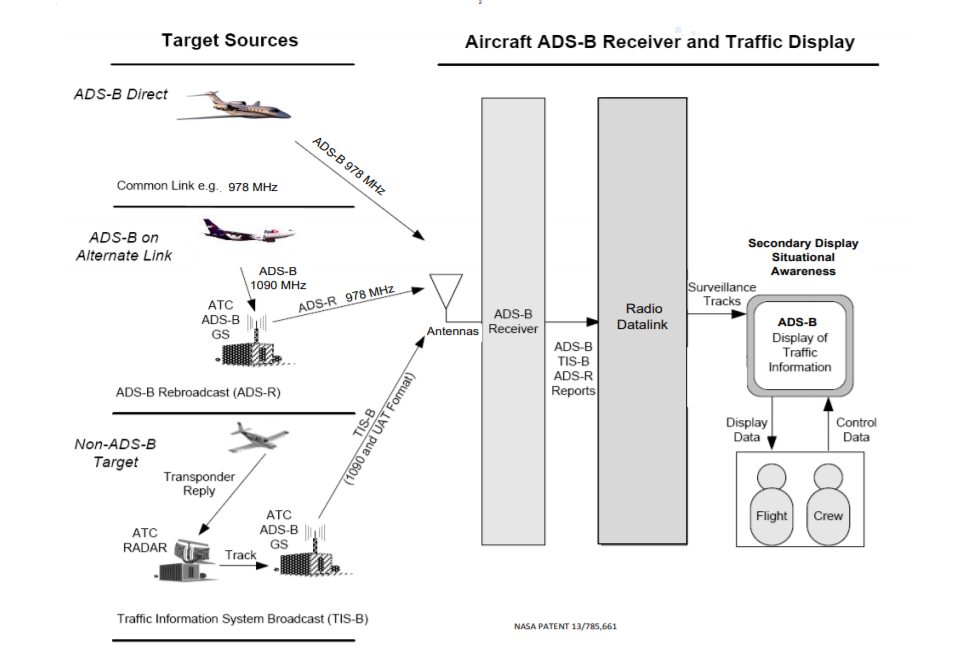
ADS-B Flight Tests on Ikhana Unmanned Aircraft System
In practice, in the USA there are three possible interaction schemes:
4. A system for predicting and displaying conflicts.
The system includes a set of algorithms for calculating trajectories and mechanisms for outputting this information to pilots.
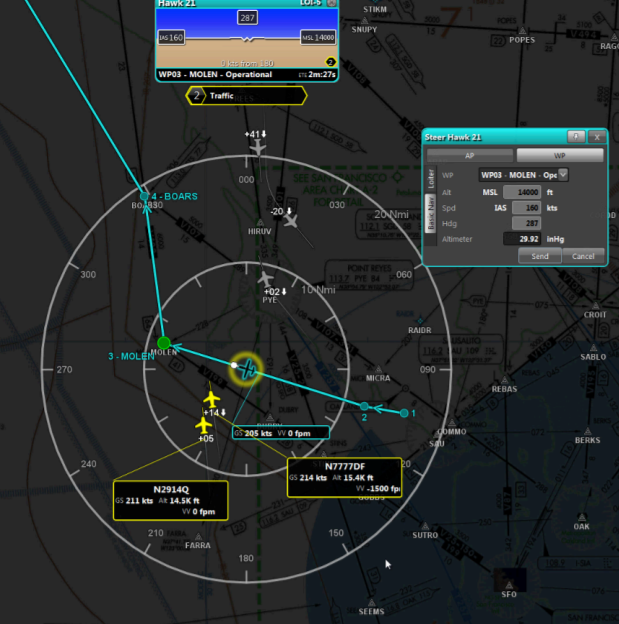
UAV flights conducted by NASA in 2018 were the first to use airborne detection and evasion. The tested solution fully complied with the FAA “see and avoid” concept (detect and aviod), and the tasks were successfully solved.
“Our goal is to create unmanned aerial systems that can be certified for flying in non-segregated airspace,” said Linden Blue, general director of hardware development company GA-ASI.
“Today's successful flight demonstrates the effective work we are doing with the FAA, NASA Armstrong Flight Research Center, and Honeywell, in order to develop a final standard for flying with unmanned aerial vehicles in high-traffic airspace,” added Linden Blue.
DAA functions can be divided into three large groups.
- Detect and track surrounding aircraft for potentially dangerous operations.
- Identification of dangerous actions.
- Preventing dangerous and conflict situations, building a safe route-evasion and the implementation of maneuver-evasion.
DAA includes a number of subsystems
Each subsystem solves individual tasks:
- Airborne radar to detect non-equipped transponder aircraft.
- TCAS collision avoidance system compatible with civil aviation technology.
- Satellite automatic dependent surveillance broadcasting (AZN-B In / Out) for broadcasting flight information and receiving similar data from other air traffic participants.
- Prediction and Display System (Prediction and Display System).
Tests
About a year ago in the United States, NASA flew and tested the Ikhana UAV system. June 12, 2018 for the first time a UAV flew in the national airspace of the United States without being accompanied by a special aircraft. Typically, these flights always require that the UAV should be followed by a safety aircraft. But in this case, the escort plane was not used, and the drone used its own DAA (Detect-and-Avoid System) collision avoidance and avoidance system. The special permission of the FAA allowed the remote pilots of the Ikhana UAV to fully rely on the work of a special on-board complex.
')

Credits: NASA / Ken Ulbrich
During the test flight, the manned aircraft made a dangerous approach to the Ikhana UAV, and the DAA system successfully informed the pilots and allowed them to perform a safe evasion maneuver.
Currently, the weight of the DAA kit is about 50−70 kg. And, as it is easy to guess, such a system is the prerogative of large UAVs, like Ikhana or SkyGuardian. However, it is worth noting that NASA also carried out work with a system adapted for mid-sized UAVs. These were tests on the SIERRA-B drone.

NASA SIERRA-B (Sensor Integrated Environmental Remote Research Aircraft)
The main problem of the test team with the SIERRA-B was the smaller size of the UAV, the SIERRA-B has a wingspan of 20 feet and weighs about 500 pounds against 66 feet and 8,000 pounds for Ikhana. However, flight tests on the SIERRA-B were successful and allowed to evaluate how DAA standards developed for larger and faster UAVs would need to be adapted for mid-size and slower drones to allow them access to commercial flights in the national airspace.
For smaller drones, options without using the onboard locator are considered, in this case automatic dependent surveillance-broadcasting is used as a key technology, which is also included in the complex. Today, special mobile transponders for drones are offered by several large companies. As part of the DAA NASA test, Sagetech Corporation provided its mobile transponder for the drone SIERRA-B. There are others, including Russian ones.
Read more about the composition of the DAA
Let's take a closer look at the component parts of DAA.
1. An airborne radar developed by GA-ASI.
It consists of a two-panel active electron scanning electron antenna, which enables the pilot to detect and track aircraft in the same field of view as the person. Airborne radar allows you to track multiple targets simultaneously, as well as continue the background search for new ones. It is a key component of onboard DAA equipment.

Due regard radar assembly
www.ga-asi.com

www.ga-asi.com

www.ga-asi.com
A DAA must detect and avoid collisions with aircraft that are both equipped with responders and not. Detection and tracking of aircraft with responders is carried out using the AZN-B, collision avoidance system (TCAS).
2. TCAS collision avoidance system.
The system is compatible with civil aviation technology and allows drones to interact with PVA equipped with a similar collision avoidance system. The second generation TCAS, which was used on Ikhana, includes a number of elements: among others, the data processing processor and the S mode transponder can be distinguished. The transponder must always be turned on. In the event that it fails, the TCAS Performance Monitor detects this failure and automatically puts the system into standby mode.

Introduction to TCAS II / faa.gov
3. Satellite automatic dependent surveillance broadcasting.
AZN-B Out / In Transmitter and Receiver. It allows broadcasting information on speed, altitude, etc., in a broadcasting range, in real time for other air traffic participants, as well as ground services. The receiver AZN-B In on board the drone is able to receive similar information transmitted by other PVA or drones.

ADS-B Flight Tests on Ikhana Unmanned Aircraft System
In practice, in the USA there are three possible interaction schemes:
- Directly, when the transmitter AZN-B Out on the plane broadcasts the data, and the receiver AZN-B In on the drone receives it.
- Through the ground station relay. It is necessary in cases where PVA transmits data and uses the 1090ES line (most often it is large commercial liners), while the drone receives data from AZN-B UAT at a frequency of 978 MHz.
- In the event that the PVA is not equipped with any of the existing systems AZN-B, data on this PVA are issued from the secondary radar, and then transmitted to the ground station, where the signal is converted to the format AZN-B UAT with its subsequent transmission. The signal of the ground station is received by the receiver AZN-B In on the drone in the same way as in the second variant. This method provides a lower update rate, since the source of information is a secondary locator, however, it allows you to see even unequipped ADS-B PVA.
4. A system for predicting and displaying conflicts.
The system includes a set of algorithms for calculating trajectories and mechanisms for outputting this information to pilots.

Influence
UAV flights conducted by NASA in 2018 were the first to use airborne detection and evasion. The tested solution fully complied with the FAA “see and avoid” concept (detect and aviod), and the tasks were successfully solved.
“Our goal is to create unmanned aerial systems that can be certified for flying in non-segregated airspace,” said Linden Blue, general director of hardware development company GA-ASI.
“Today's successful flight demonstrates the effective work we are doing with the FAA, NASA Armstrong Flight Research Center, and Honeywell, in order to develop a final standard for flying with unmanned aerial vehicles in high-traffic airspace,” added Linden Blue.
Source: https://habr.com/ru/post/460695/
All Articles